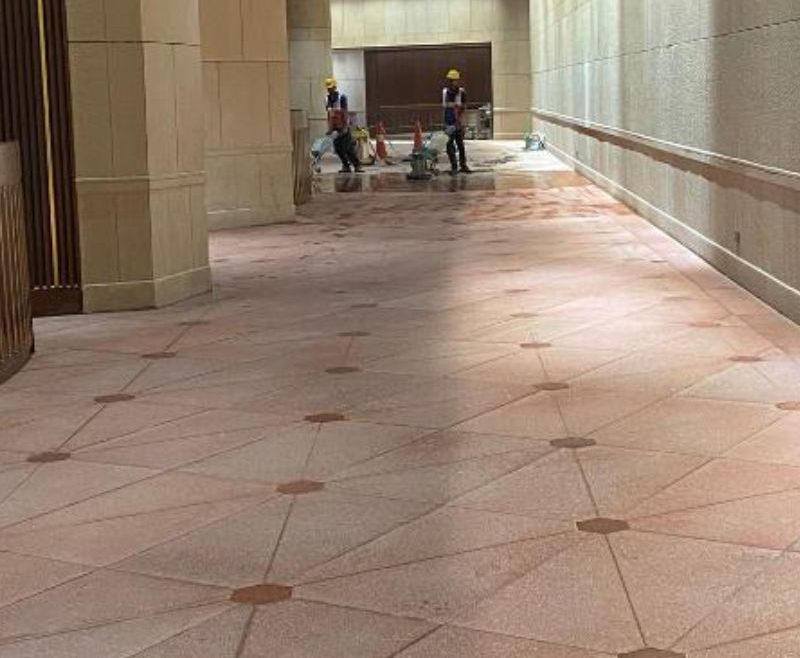Marble has always been admired for its natural elegance, rich veining, and timeless beauty. From majestic hotel lobbies to refined residential interiors, its presence evokes a sense of luxury that few other materials can match. However, like all natural stones, marble is not immune to damage. Over time, foot traffic, spills, acidic substances, and daily use can dull its surface, leaving it scratched, stained, or etched. That’s where marble polishing steps in, not just as a superficial solution, but as a carefully calibrated process entrenched in science and craftsmanship.
The Composition of Marble
To understand marble polishing, it is imperative to understand what marble is. Marble is a metamorphic rock composed primarily of calcite, which is a crystalline form of calcium carbonate. This makes it relatively soft and porous compared to other natural stones such as granite or travertine. While this softness gives marble its characteristic smoothness and ability to take on a high polish, it also makes it vulnerable to breakage and damage. For instance, acid can react with the calcium carbonate present in the marble, causing etching or discoloration.
The Goal of Polishing
Polishing marble isn’t simply about making it look shiny. It’s about restoring the stone’s surface to a smooth, uniform finish, enhancing light reflection, and protecting it from further damage. This involves removing a thin layer from the stone’s surface. This helps to eliminate imperfections like scratches, etch marks, and dull spots. The final result is a visually appealing surface that is easier to clean and maintain.
The Marble Polishing Process
Marble polishing is a multi-step process that relies on both mechanical and chemical techniques to achieve a mirror-like finish. Here’s how it typically works:
Preparation and Cleaning: Before any polishing can begin, the marble surface must be thoroughly cleaned with pH-neutral cleaners specifically formulated for use on marble. This ensures that dust, grime, or oily residues do not interfere with the polishing process.
Grinding: The real work starts with grinding, also known as honing. Using industrial-grade diamond abrasives, technicians mechanically remove the top layer of marble. The grit level of these diamond pads can range from coarse to very fine. Coarse grits are used to remove deep scratches or surface lippage (uneven tiles), while finer grits are gradually put to use to smooth out the surface.
Polishing: Once the surface is honed, finer abrasives are used to polish the marble to a glossy finish. This is typically done using resin-bonded diamond pads or polishing powders. As the grit level increases, the surface becomes smoother and begins to reflect light more evenly, giving it a characteristic shine.
Sealing: Though sealing isn’t technically part of the polishing process, it’s a final and crucial step. Marble is porous and can absorb liquids that may stain it over time. A penetrating sealant helps protect the polished surface from spills, moisture, and staining agents, ensuring that the polishing lasts longer.
The Science of Reflection
What gives polished marble its signature shine is the way light interacts with its smooth, flat surface. As the polishing process progresses, the micro-abrasions and pores on the surface become smaller and more uniform. This allows light to bounce off the surface in a single direction, creating a mirror-like reflection. In contrast, a scratched or etched surface scatters light in multiple directions, appearing dull or chalky.
Why Professional Expertise Matters
While DIY kits and basic polishing powders exist, true marble polishing is best left to professionals. The equipment, materials, and knowledge are critical for achieving optimal results. Inexperienced handling can lead to uneven polishing, missed damage, or worse – permanent etching or scratches.
Conclusion
Marble polishing is far more than a surface-level treatment. It’s a process that blends geology, chemistry, and precision engineering. By understanding the science behind marble and how polishing restores its shine, one can appreciate the craftsmanship and the intricate care to maintain this luxurious material. Be it a private residence or a grand commercial space, polished marble emphasizes not only of beauty and aesthetics but also of expertise behind the brilliance.
Have questions or need expert advice?
📧 Write to us at: info@aplustouchstoneservices.com
🌐 Visit us online: www.aplustouchstoneservices.com

